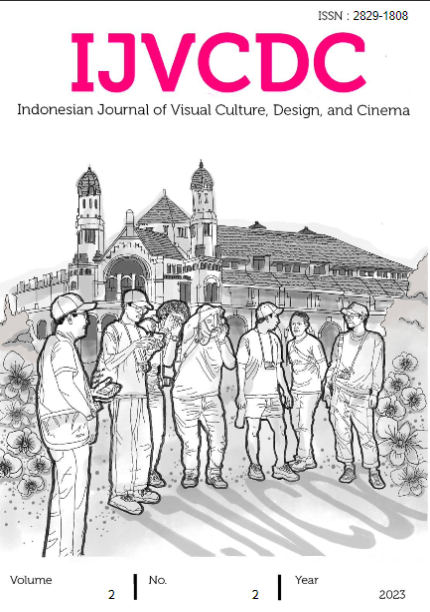Disembodied Surreal Tendencies of Silent Hill the Film: Traces of Japanese Abreaction Terror
DOI:
https://doi.org/10.21512/ijvcdc.v2i2.8244Keywords:
Silent Hill, J-Horror, Surrealism, Post-occupation Japan, Videogame FilmAbstract
The Silent Hill live action cinema was an adaptation of a survival horror videogame title that explored the theme of loss, delusion, but also of internal conflict that leads to the ultimate self-redemption. Through the psychoanalytical reading, the surreal tendencies and symbolisms are analysed, the signs of abreaction terror sourced historically from the post-war Japan made manifest. This article looks at the possible point of origin of the surreal symbolism utilized by first the videogame iterations, then secondly the adaptation to the silver screen which may not translate into its contextually accurate adaptation. Exposing the roots of such subconscious historical trauma realizes how much the live action films made disembodiment of that spirit resulting in its failure to reach down deeper into the source material.References
Balmain, C. (2008). Introduction to Japanese horror film. Introduction to Japanese Horror Film. https://doi.org/10.5860/choice.46-6688
Breton, A. (2010). First manifesto of surrealism 1924. Trans. AS Kline. Poets of Modernity, 30.
Brown, S. T. (2018). Japanese Horror and the Transnational Cinema of Sensations. In Japanese Horror and the Transnational Cinema of Sensations. https://doi.org/10.1007/978-3-319-70629-0
Burtch, A. (2012). Heralds of Doom. Material Culture Review / Revue de La Culture Matérielle, 74(0), 102–115.
Campbell, J. (2015). From Sleepy Hollow to Silent Hill: American Gothic to Globalgothic. In Globalgothic. Manchester University Press. https://doi.org/10.7765/9781526102973.00017
Carroll, N. (2003). The Philosophy of Horror: Or, Paradoxes of the Heart. Routledge.
Cohen, J. J. (2007). Monster Culture (Seven Theses). Gothic Horror: A Guide for Students and Readers, 198–216.
Derry, C. (2009). Dark Dreams 2.0: A Psychological History of the Modern Horror Film from the 1950s to the 21st century. McFarland.
Freud, S. (2010). The Uncanny (Issue 1919). Penguin.
Gordon, R. G. (1923). The Phenomenon of Abreaction. Journal of Neurology, Neurosurgery and Psychiatry, S1-3(12), 322–328. https://doi.org/10.1136/jnnp.s1-3.12.322
Ingebretsen, E. (2001). At Stake: Monsters and the Rhetoric of Fear in Public Culture. University of Chicago Press.
Iwabuchi, K. (2002). Recentering Globalization. In Recentering Globalization. Duke University Press. https://doi.org/10.2307/j.ctv11vc8ft
Kaklamanidou, B., & Katsaridou, M. (2013). “ Silent Hillâ€: Adapting a Video Game. Literature/Film Quarterly, 41(4), 266–277.
Kirkland, E. (2005). Restless Dreams in Silent Hill: Approaches to Video Game Analysis. Journal of Media Practice, 6(3), 167–178. https://doi.org/10.1386/jmpr.6.3.167/1
Kirkland, E. (2009). Masculinity in video games: The gendered gameplay of silent hill. Camera Obscura, 24(2), 161–183. https://doi.org/10.1215/02705346-2009-006
Kirkland, E. (2010). Discursively Constructing the Art of Silent Hill. Games and Culture, 5(3), 314–328. https://doi.org/10.1177/1555412010364976
Kirkland, E. (2012). Gothic Videogames, Survival Horror, and the Silent Hill Series . Gothic Studies, 14(2), 106–122. https://doi.org/10.7227/gs.14.2.8
Kristeva, J. (1982). Power of Horror: An Essay on Abjection.
Meyer, M. (2012). The Night Parade of One Hundred Demons : A Field Guide to Japanese Yokai. Matthew Meyer.
Monteiro, T. J. L. (2019). Shattered Identities: The Weakness of the Male Hero in the Silent Hill Game Franchise . In Gender and Contemporary Horror in Comics, Games and Transmedia (pp. 57–67). Emerald Publishing Limited. https://doi.org/10.1108/978-1-78769-107-020191007
Okuyama, Y. (2015). Japanese Mythology in Film: A Semiotic Approach to Reading Japanese Film and Anime. Lexington Books.
Perron, B. (2011). Silent Hill: The Terror Engine. In Silent Hill: The Terror Engine. University of Michigan Press. https://doi.org/10.3998/lvg.11053908.0001.001
Picard, M., & Fandango, G. (2008). Video games and their relationship with other media. The Video Game Explosion: A History from Pong to Playstation and Beyond, 293–300.
Poole, W. S. (2011). Monsters in America: Our historical Obsession with the Hideous and The Haunting. Baylor University Press.
Steinmetz, K. F. (2018). Carceral horror: Punishment and control in Silent Hill. Crime, Media, Culture, 14(2), 265–287. https://doi.org/10.1177/1741659017699045
Stockwell, P. (2017). The Language of Surrealism. The Language of Surrealism. https://doi.org/10.1057/978-1-137-39219-0
Yamaguchi, S. (2018). Rethinking The Concept of Kokoro no Kea (Care for Mind) for Disaster Victims in Japan. International Journal of Culture and Mental Health, 11(4), 406–416. https://doi.org/10.1080/17542863.2017.1404116
Yoshimi, S., & Buist, D. (2003). ‘America’as desire and violence: Americanization in postwar Japan and Asia during the Cold War. Inter-Asia Cultural Studies, 4(3), 433–450.
Downloads
Published
How to Cite
Issue
Section
License
Copyright (c) 2023 Andreas Jaka Pratama

This work is licensed under a Creative Commons Attribution-NonCommercial-ShareAlike 4.0 International License.







